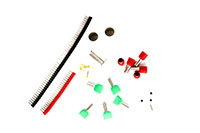This would be a 77' run. The Panel cables that go to combiner box are 12 gauge, then I believe the plan is to go to Inverter with 10 gauge.
Anyway, it's a 77'run then from the Inverter to house breaker. Is there an online calculator to figure our wire gauge?
Anyway, it's a 77'run then from the Inverter to house breaker. Is there an online calculator to figure our wire gauge?



Comment